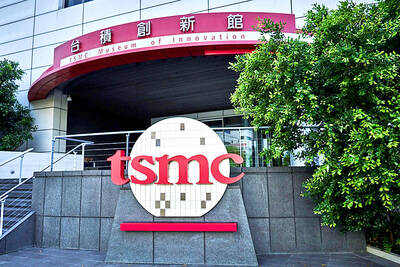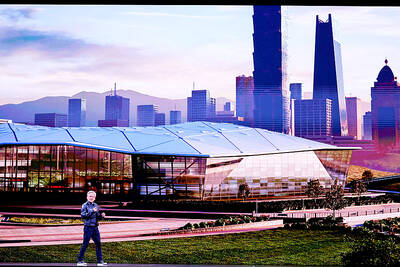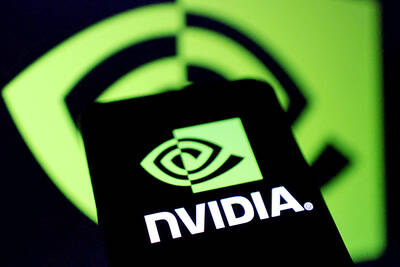The world’s largest iron ore exporter has delivered a mixed message on its outlook, raising near-term price forecasts, but combining that revision with a more somber message that China’s gargantuan imports are set to level off as steel production eases in the coming years.
Iron ore would average US$61.80 a tonne this year and US$51.10 in 2019, the Australian Department of Industry, Innovation and Science said in a quarterly report yesterday.
That compares with forecasts of US$52.60 and US$48.80 in the department’s previous outlook.
Prices are “expected to moderate, to better reflect the fundamentals of growing low-cost supply from Brazil and moderating demand in China,” the department said, predicting rising global volumes this year as well as next, driven by new mines, including Vale SA’s giant S11D project in Brazil.
Steel production in China would drop each year through to 2023, while iron ore shipments from Australia and Brazil would rise before leveling off, it forecast.
Iron ore received a battering last month, collapsing into a bear market as investors fretted about weaker-than-expected springtime demand in top user China, record holdings accumulated in its ports, and jitters about global growth as the US and China swapped barbs on trade.
Barclays PLC is among banks that have flagged the risk of a further weakening of prices this quarter, highlighting the potential for a switch away from higher-content ores, which have seen strong demand as Beijing acts to battle pollution.
“Iron ore import demand is expected to be weighed down by declining steel production in China,” the department said. “The main drivers of declining steel production are slowing construction activity and infrastructure investment, and increasingly stringent environmental regulations.”
The spot price for iron ore with 62 percent content in northern China was at US$63.35 a dry tonne on Wednesday last week, according to Mysteel.com.
That compared with US$73.50 at the end of last year and this year’s peak of almost US$80 in late February.
So far this year, the raw material has averaged about US$73 a tonne.
Among the department’s forecasts, China’s iron ore imports are forecast to ease from 1.08 billion tonnes this year to 1.04 billion in 2023.
At the same time, nationwide steel output would fall from 832 million tonnes this year to 805 million in 2023, while local steel usage would contract from 772 million tonnes to 742 million.

SEEKING CLARITY: Washington should not adopt measures that create uncertainties for ‘existing semiconductor investments,’ TSMC said referring to its US$165 billion in the US Taiwan Semiconductor Manufacturing Co (TSMC, 台積電) told the US that any future tariffs on Taiwanese semiconductors could reduce demand for chips and derail its pledge to increase its investment in Arizona. “New import restrictions could jeopardize current US leadership in the competitive technology industry and create uncertainties for many committed semiconductor capital projects in the US, including TSMC Arizona’s significant investment plan in Phoenix,” the chipmaker wrote in a letter to the US Department of Commerce. TSMC issued the warning in response to a solicitation for comments by the department on a possible tariff on semiconductor imports by US President Donald Trump’s

The government has launched a three-pronged strategy to attract local and international talent, aiming to position Taiwan as a new global hub following Nvidia Corp’s announcement that it has chosen Taipei as the site of its Taiwan headquarters. Nvidia cofounder and CEO Jensen Huang (黃仁勳) on Monday last week announced during his keynote speech at the Computex trade show in Taipei that the Nvidia Constellation, the company’s planned Taiwan headquarters, would be located in the Beitou-Shilin Technology Park (北投士林科技園區) in Taipei. Huang’s decision to establish a base in Taiwan is “primarily due to Taiwan’s talent pool and its strength in the semiconductor

An earnings report from semiconductor giant and artificial intelligence (AI) bellwether Nvidia Corp takes center stage for Wall Street this week, as stocks hit a speed bump of worries over US federal deficits driving up Treasury yields. US equities pulled back last week after a torrid rally, as investors turned their attention to tax and spending legislation poised to swell the US government’s US$36 trillion in debt. Long-dated US Treasury yields rose amid the fiscal worries, with the 30-year yield topping 5 percent and hitting its highest level since late 2023. Stocks were dealt another blow on Friday when US President Donald

UNCERTAINTY: Investors remain worried that trade negotiations with Washington could go poorly, given Trump’s inconsistency on tariffs in his second term, experts said The consumer confidence index this month fell for a ninth consecutive month to its lowest level in 13 months, as global trade uncertainties and tariff risks cloud Taiwan’s economic outlook, a survey released yesterday by National Central University found. The biggest decline came from the timing for stock investments, which plunged 11.82 points to 26.82, underscoring bleak investor confidence, it said. “Although the TAIEX reclaimed the 21,000-point mark after the US and China agreed to bury the hatchet for 90 days, investors remain worried that the situation would turn sour later,” said Dachrahn Wu (吳大任), director of the university’s Research Center for